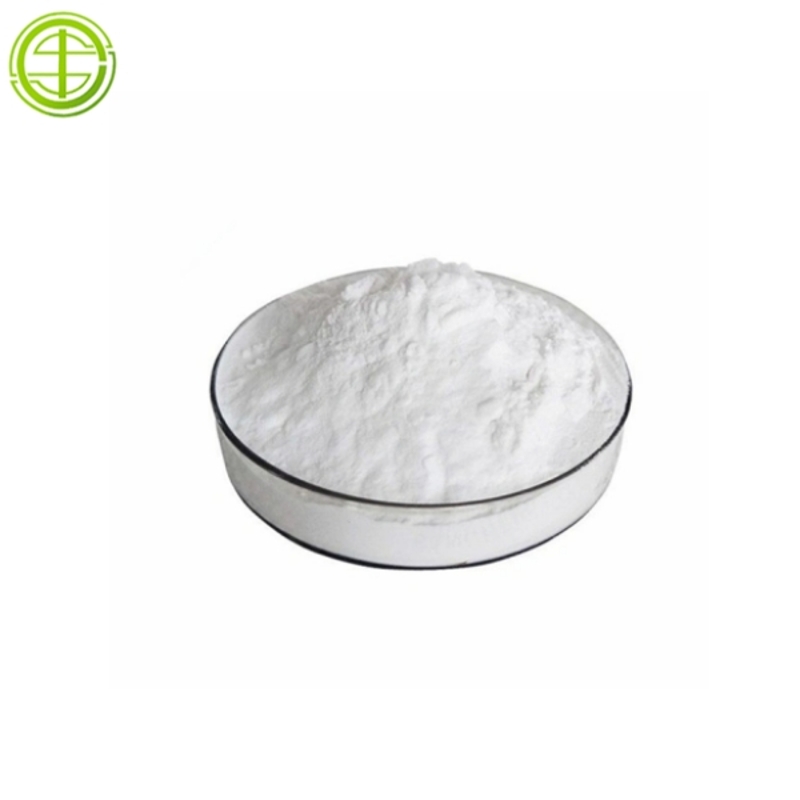-
Categories
-
Pharmaceutical Intermediates
-
Active Pharmaceutical Ingredients
-
Food Additives
- Industrial Coatings
- Agrochemicals
- Dyes and Pigments
- Surfactant
- Flavors and Fragrances
- Chemical Reagents
- Catalyst and Auxiliary
- Natural Products
- Inorganic Chemistry
-
Organic Chemistry
-
Biochemical Engineering
- Analytical Chemistry
- Cosmetic Ingredient
-
Pharmaceutical Intermediates
Promotion
ECHEMI Mall
Wholesale
Weekly Price
Exhibition
News
-
Trade Service
Recently, the team of Professor Wei Zhaojun of Hefei University of Technology/Northern Minzu University published a research paper entitled "Anti-hardening effect and mechanism of silkworm sericin peptide in high protein nutrition bars during early storage" in Food Chemistry (Q1, IF: 9.
231).
。 Zhu Hongtao, a 2021 doctoral student of Hefei University of Technology, is the first author of the paper, and Professor Wei Zhaojun of Hefei University of Technology/Northern University for Nationalities is the corresponding author
of the paper.
High protein nutrition bar (HPNBs) is a kind of convenience food with high protein content, with simple processing, shelf-stable, easy to eat, high nutritional value and other advantages, has been widely used in military, aerospace, sports and other special food fields, with the development of the economy and people's pursuit of dietary nutrition, in recent years, protein bar products have been further promoted, in the consumer market has been rapidly developed
.
As an important factor in determining the eating experience, the texture of food greatly affects consumers' acceptance of products and willingness to
buy.
HPNBs are easy to harden during storage, which seriously affects the color, taste, texture, nutrition and other indicators of food, which greatly limits the shelf life of products and consumers' dietary experience
.
Previous studies have shown that hardening of HPNBs is generally divided into pre-hardening involving physical changes between different components, such as phase separation, water migration, and protein self-aggregation, and later hardening in the middle and late stages of storage, mainly after a few weeks or months of storage, dominated by chemical reactions such as the Maillard reaction
.
Previous studies have made various attempts at anti-sclerosis methods for HPNBs foods, including protein modification, replacing protein components with protein hydrolysates, and adding polyphenols to inhibit the Maillard reaction
.
Although these methods relatively reduce the increase in hardness of HPNBs after storage, due to the use of a large number of plant extracts or chemical agents, which in turn reduce the protein content of HPNBs, sacrifice the nutritional value of the product, and lead to an increase
in production costs.
Sericin is a class of natural proteins from silk that is usually removed in the traditional silk reeling industry and discharged
with wastewater.
Previous studies have shown that sericin contains a large amount of serine and a variety of essential amino acids, which has extremely high nutritional value
.
At the same time, it has a variety of biological activities, such as antioxidant, bacteriostatic, etc.
, and also has many benefits for the human body, such as lowering blood sugar, lowering blood pressure, promoting nerve cell development, anti-fatigue, etc.
, and has almost no toxic side effects
.
At present, sericin has made corresponding research progress in the fields of biomaterials, medicine, and daily cosmetics, but further investment and promotion of serine research in the food field still need to be improved
.
Image summary
In this study, the authors added hydrolyzed sericin peptide (SRP) as a novel anti-sclerotic agent to HPNBs, evaluating and studying its hard-resistant effects and mechanismsfor the first time.
The data show that the hardening of HPNBs in the early stage of storage is mainly caused
by physical changes such as water migration, protein self-polymerization and initiation phase separation.
The addition of SRP to HPNBs made from whey protein isolate (WPI) and sodium caseinate (CS) effectively attenuates the hardening of protein bars within 72 hours of storage, and this effect is positively correlated
with the amount of SRP added.
For WPI-HPNBs and CS-HPNBs, 8% SRP reduced hardness
by 63.
7% and 54.
6%, respectively, over the 72-hour storage process.
SRP improves the migration
of water molecules by increasing the fluidity of water and hydrophilic small molecules in the system.
At the same time, by increasing the ζ-potential of the particles, the surface hydrophobicity of the particles is reduced, the original structure of the particles is maintained, the attraction between the particles is weakened, the stability of the particles is improved, and finally the process
of protein self-aggregation and the formation of larger particles is slowed down.
Therefore, SRP effectively hinders the phase separation caused by water migration and protein self-aggregation of HPNBs in the early storage stage, and inhibits the hardening
of HPNBs.
This study pioneers the potential of sericin as a functional ingredient or additive in food by studying the role and mechanism of sericin on the early hardening of high-protein nutrition bars, and provides sufficient evidence
for the role of sericin in the field of anti-sclerosis in food 。 Based on the unique function and biological activity of sericin, researchers can carry out more innovations and attempts, through the application of innovative sericin in the food field, help the high-value utilization of silkworm cocoons, improve the economic benefits of the sericulture industry, promote the upgrading and transformation of China's traditional sericulture industry, and inspire new ideas
for the application of insect proteins and insect products such as silkworms in the food industry.
Results showcase
Figure 1.Morphological figure of HPNBs and pre- and post-test morphology 2.
Changes in water fluidity of HPNBs Figure 3.
Micromorphological characterization of HPNBs during early storage Fig.
4.
Particle morphological structure of HPNBs 5.
Particle size distribution, ζ-potential and surface hydrophobicity of HPNBs
Figure 6.
ATR-FTIR spectra and protein secondary structure content of HPNBs
Reference
Zhu, H.
, Zhang, X.
-X.
, Zhang, R.
, Feng, J.
-Y.
, Thakur, K.
, Zhang, J.
-G.
, & Wei, Z.
-J.
(2023).
Anti-hardening effect and mechanism of silkworm sericin peptide in high protein nutrition bars during early storage[J].
Food Chemistry, 407, 135168.
https://doi.
org/10.
1016/j.
foodchem.
2022.
135168.
Original link
https://doi.
org/10.
1016/j.
foodchem.
2022.
135168
About the author
Professor Wei Zhaojun
Born in November 1970, Ph.
D.
, professor, doctoral supervisor
.
Dean of the School of Biological Science and Engineering, North Minzu University, Professor of the School of Food and Biological Engineering, Hefei University of Technology
.
Member of the Teaching Steering Committee of Food Science and Engineering of the Ministry of Education; He enjoys the special government allowance of the State Council, the distinguished professor of Ningxia Higher Education University, the outstanding talent of the new century of the Ministry of Education, the winner of the Anhui Outstanding Youth Fund, and the distinguished professor of Huangshan Scholar; Chairman of Anhui Province Agriculture and Forestry Special Food Processing Industry Technology Innovation Strategic Alliance, President of
Anhui Health Culture Research Association.
Expert in the evaluation of the National Natural Science Foundation of China, the Science and Technology Project of the Ministry of Education, the China Scholarship Council Fund, and more than ten provincial funds; Review experts such as the National Science and Technology Progress Award and the Science and Technology Progress Award of the Ministry of Education; Trends in Food Science & Technology, Food Chemistry, Industrial Crops and Products and other domestic and foreign reviewers
。 Associate Editor of Frontiers in Nutrition, Associate Editor of Current Topics in Nutraceutical Research, Editor-in-Chief of Agri-Waste & Agri-Byproduct Journal, Guest Editor of Food and Chemical Toxicology, Editorial Board Member of Food Science.
He has won the second prize of National Science and Technology Progress Award, the second prize of Science and Technology Progress Award of the Chinese Academy of Agricultural Sciences, the first prize of Science and Technology Progress Award of the Ministry of Agriculture, and the third prize of Anhui Province Science and Technology Progress Award
.
He has presided over more than 30 scientific research projects such as the National Natural Science Foundation of China and the Anhui Provincial Science and Technology Major Project
.
He has published more than 210 high-level papers in Trends in Food Science & Technology, Food Chemistry, Industrial Crops and Products, and Food and Chemical Toxicology as the first or corresponding author; More than 30 patents have been authorized or applied
.
His research interests include the processing
of functional foods for agricultural and forestry specialties.
In 2017, he graduated from South China Agricultural University with a bachelor's degree in animal science; In 2020, he graduated from Southwest University with a master's
degree in special economic animal breeding.
Ph.
D
.
is currently studying energy power at the School of Food and Biological Engineering, Hefei University of Technology.
During his Ph.
D.
, his research interests were the key technologies
of insect protein processing and utilization in food.
Currently available in Food Chemistry, Journal of Insects as Food and Feed, Acta Biomaterialia, International Journal of Biological Macromolecules, Insect Biochemistry and Molecular Biology, Polymers and other journals have published 7 high-level papers, including 3 first
authors.







